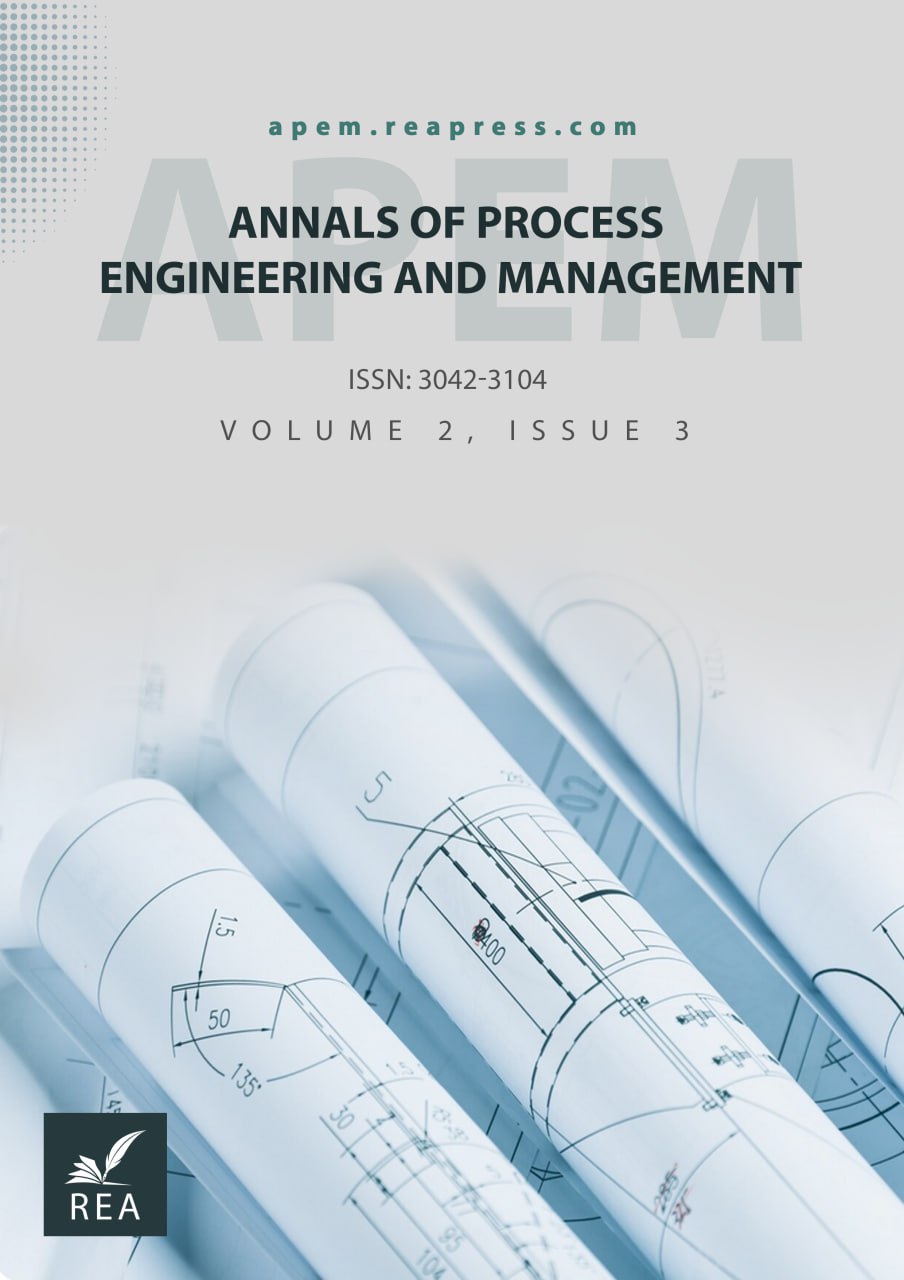Evaluating State Bank Training Courses through the CIPP Model within Enterprise Architecture
Abstract
Employee development is a strategic priority for organizations, yet the mere provision of training does not guarantee effectiveness. This study evaluates the effectiveness of in-service training programs at a state-owned bank using the Context, Input, Process, Product (CIPP) model within the framework of Enterprise Architecture (EA). Employing a descriptive-survey method with a practical orientation, data were collected from 82 employees who had participated in the training courses, selected via convenience sampling. A researcher-designed questionnaire assessed participants’ perceptions across the four CIPP dimensions. Data analysis using descriptive statistics and one-sample t-tests revealed significantly negative perceptions regarding the context and input components, suggesting a misalignment with employee needs and inadequate resources. In contrast, the training process was positively evaluated. However, the product dimension indicated limited impact on employees’ knowledge, skills, and career development. The findings underscore the need for strategic revision of the training programs to enhance their effectiveness and alignment with organizational objectives within the bank’s EA.
Keywords:
In-service training, Training effectiveness, CIPP model, Enterprise architecture, Human resource developmentReferences
- [1] Bernard, S. A. (2012). An introduction to enterprise architecture. AuthorHouse. https://B2n.ir/yd5555
- [2] Zachman, J. A. (1997). Enterprise architecture: The issue of the century. Database programming and design, 10(3), 44-53. https://B2n.ir/xx9692
- [3] Morganwalp, J. M., & Sage, A. P. (2004). Enterprise architecture measures of effectiveness. International journal of technology, policy and management, 4(1), 81-94. https://doi.org/10.1504/IJTPM.2004.004569
- [4] Calhau, R. F., Azevedo, C. L., & Almeida, J. P. A. (2021). Towards ontology-based competence modeling in enterprise architecture. In 2021 IEEE 25th international enterprise distributed object computing conference (EDOC) (pp. 71-81). IEEE. https://doi.org/10.1109/EDOC52215.2021.00018
- [5] Swanson, R. A. (2022). Foundations of human resource development. Berrett-Koehler Publishers. https://B2n.ir/xy6099
- [6] Piwowar-Sulej, K., Malik, S., Shobande, O. A., Singh, S., & Dagar, V. (2024). A contribution to sustainable human resource development in the era of the COVID-19 pandemic. Journal of Business Ethics, 191(2), 337-355. https://doi.org/10.1007/s10551-023-05456-3
- [7] Kess-Momoh, A. J., Tula, S. T., Bello, B. G., Omotoye, G. B., & Daraojimba, A. I. (2024). Strategic human resource management in the 21st century: A review of trends and innovations. World journal of advanced research and reviews, 21(1), 746-757. http://dx.doi.org/10.30574/wjarr.2024.21.1.0105
- [8] Brinkerhoff, R. O. (2005). The success case method: A strategic evaluation approach to increasing the value and effect of training. Advances in developing human resources, 7(1), 86-101. https://doi.org/10.1177/1523422304272172
- [9] Borate, N., Gopalkrishna, D., Shiva Prasad, H. C., & Borate, S. (2014). A case study approach for evaluation of employee training effectiveness and development program. The International Journal of Business & Management, 2(6), 201-210. https://dx.doi.org/10.2139/ssrn.2486212
- [10] Bluestone, J., Johnson, P., Fullerton, J., Carr, C., Alderman, J., & BonTempo, J. (2013). Effective in-service training design and delivery: Evidence from an integrative literature review. Human resources for health, 11(1), 51. https://doi.org/10.1186/1478-4491-11-51
- [11] Kirkpatrick, D., & Kirpatrick, J. D. (2011). The Kirkpatrick four levels. Newnan, GA: Kirkpatrick Partners. https://B2n.ir/qk4216
- [12] Phillips, J. J. (2012). Return on investment in training and performance improvement programs. Routledge. https://doi.org/10.4324/9780080516257
- [13] Stufflebeam, D. L. (1983). The CIPP model for program evaluation. In Evaluation models: Viewpoints on educational and human services evaluation (pp. 117-141). Dordrecht: Springer Netherlands. https://doi.org/10.1007/978-94-009-6669-7_7
- [14] Stufflebeam, D. L. (2000). The CIPP model for evaluation. In Evaluation models: Viewpoints on educational and human services evaluation (pp. 279-317). Dordrecht: Springer Netherlands. https://doi.org/10.1007/0-306-47559-6_16
- [15] Stufflebeam, D. L. (2007). CIPP evaluation model checklist. Evaluation Checklists Project. https://www.betterevaluation.org/sites/default/files/Stufflebeam_CIPP.pdf
- [16] Stufflebeam, D. L. (1971). The relevance of the CIPP evaluation model for educational accountability. The Ohio State University. https://files.eric.ed.gov/fulltext/ED062385.pdf
- [17] Zhang, G., Zeller, N., Griffith, R., Metcalf, D., Williams, J., Shea, C., & Misulis, K. (2011). Using the context, input, process, and product evaluation model (CIPP) as a comprehensive framework to guide the planning, implementation, and assessment of service-learning programs. Journal of higher education outreach and engagement, 15(4), 57-84. https://eric.ed.gov/?id=ej957107
- [18] Al-Sharjabi, A., & Al-Mrasbi, A. A. (2019). MBA program evaluation of the Arab academy for banking and finance sciences–Sana’. International journal of business and technopreneurship, 9(2). 193-208. https://B2n.ir/rk9242
- [19] Toosi, M., Modarres, M., Amini, M., & Geranmayeh, M. (2021). Context, input, process, and product evaluation model in medical education: A systematic review. Journal of education and health promotion, 10(1), 199. https://doi.org/10.4103/jehp.jehp_1115_20
- [20] Agustina, N. Q., & Mukhtaruddin, F. (2019). The CIPP model-based evaluation on integrated english learning (IEL) program at language center. English language teaching educational journal, 2(1), 22-31. http://dx.doi.org/10.12928/eltej.v2i1.1043
- [21] Yastıbaş, A. E., & Kavgacı, T. (2020). Evaluating english for academic purposes II course through the CIPP model. Gümüşhane üniversitesi sosyal bilimler dergisi, 11(1), 86-94. https://doi.org/10.36362/gumus.615998
- [22] Ramly, A. T. (2019). Evaluation of pumping HR (Human resources) model-based training program on human resources development at Bogor agricultural university (IPB). Integrated journal of business and economics, 3(2), 153-163. http://dx.doi.org/10.33019/ijbe.v3i2.154


